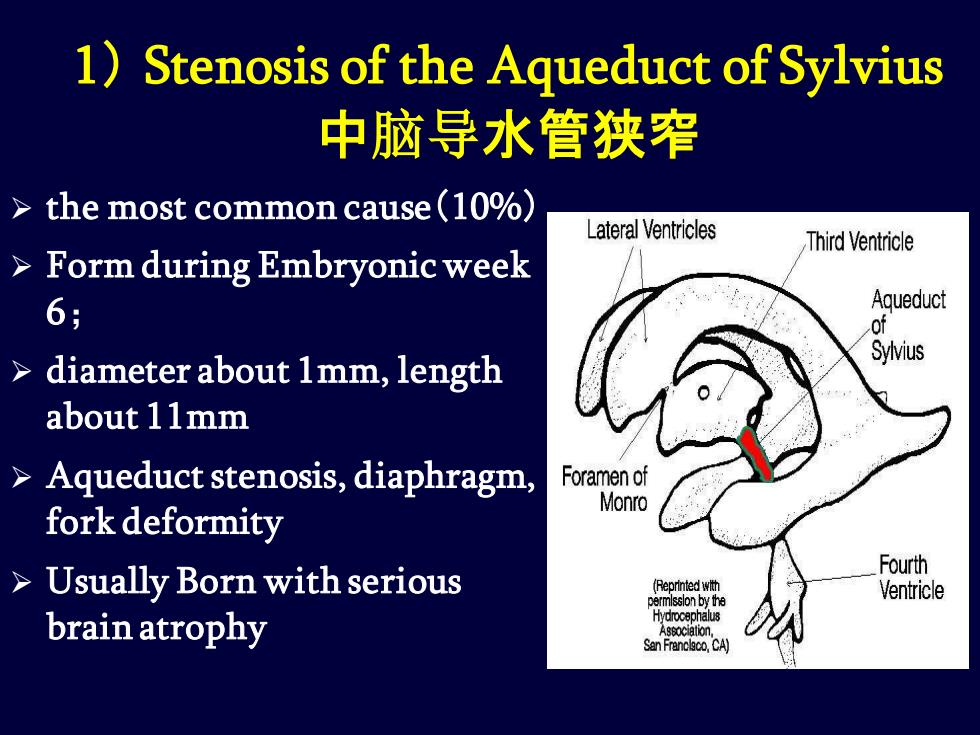
1.Pathogenesis a. Excessive secretion of CSF by the choroid plexus as in cases of choroid plexus papilloma. b.Blockage of CSF circulation.This could be at any level of the CSF circulation. c.Poor absorption of CSF into the venous sinuses caused by scarring of the arachnoid villi
1. Pathogenesis a. Excessive secretion of CSF by the choroid plexus as in cases of choroid plexus papilloma. b. Blockage of CSF circulation. This could be at any level of the CSF circulation. c. Poor absorption of CSF into the venous sinuses caused by scarring of the arachnoid villi

Excessive secretion Blockage of CSF Poor absorption
Excessive secretion Blockage of CSF Poor absorption

2.Classification Classification by Etiology Congenital:when the condition exists at birth Acquired:when it occurs as the result of a injury to the brain after birth. > Classification by Imaging Communication(交通性):inadequate absorption of CSF Non-Communication/.Obstructive(梗阻性): blockage in the ventricular pathways
➢ Classification by Etiology • Congenital: when the condition exists at birth • Acquired: when it occurs as the result of a injury to the brain after birth. ➢ Classification by Imaging • Communication(交通性):inadequate absorption of CSF • Non-Communication/Obstructive(梗阻性): blockage in the ventricular pathways 2. Classification

1).Congenital Hydrocephalus a.Stenosis of the Aqueduct of Sylvius b.Arnold-Chiari Malformation c.Dandy-Walker Malformation d.Other Congenital Malformation
1). Congenital Hydrocephalus a. Stenosis of the Aqueduct of Sylvius b. Arnold-Chiari Malformation c. Dandy-Walker Malformation d. Other Congenital Malformation

1)Stenosis of the Aqueduct of Sylvius 中脑导水管狭窄 >the most common cause(10%) Lateral Ventricles Third Ventricle >Form during Embryonic week 6; Aqueduct O Sylvius >diameter about 1mm,length about 11mm >Aqueduct stenosis,diaphragm, Foramen of Monro fork deformity >Usually Born with serious Fourth 仍eprintedwth Ventricle permisslon by the brain atrophy Hydrocephalus San FrncCA)
1) Stenosis of the Aqueduct of Sylvius 中脑导水管狭窄 ➢ the most common cause(10%) ➢ Form during Embryonicweek 6; ➢ diameter about 1mm, length about 11mm ➢ Aqueduct stenosis, diaphragm, fork deformity ➢ Usually Born with serious brain atrophy